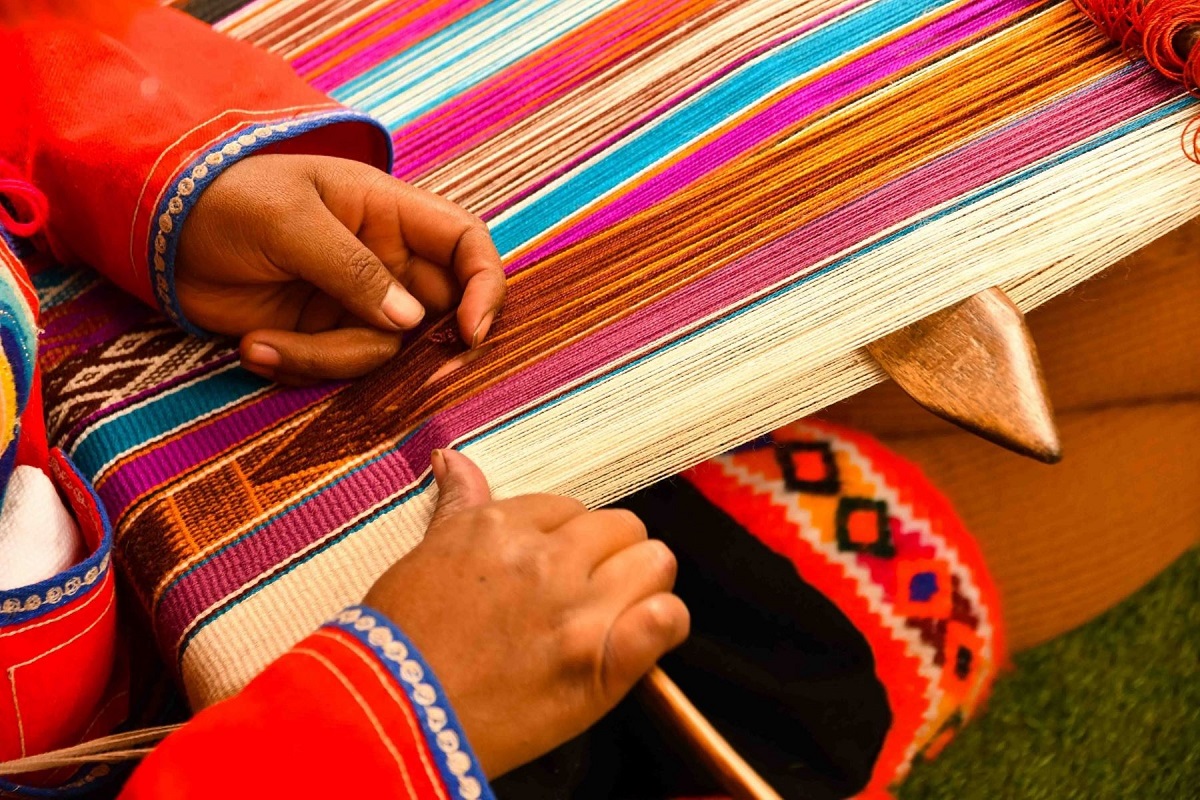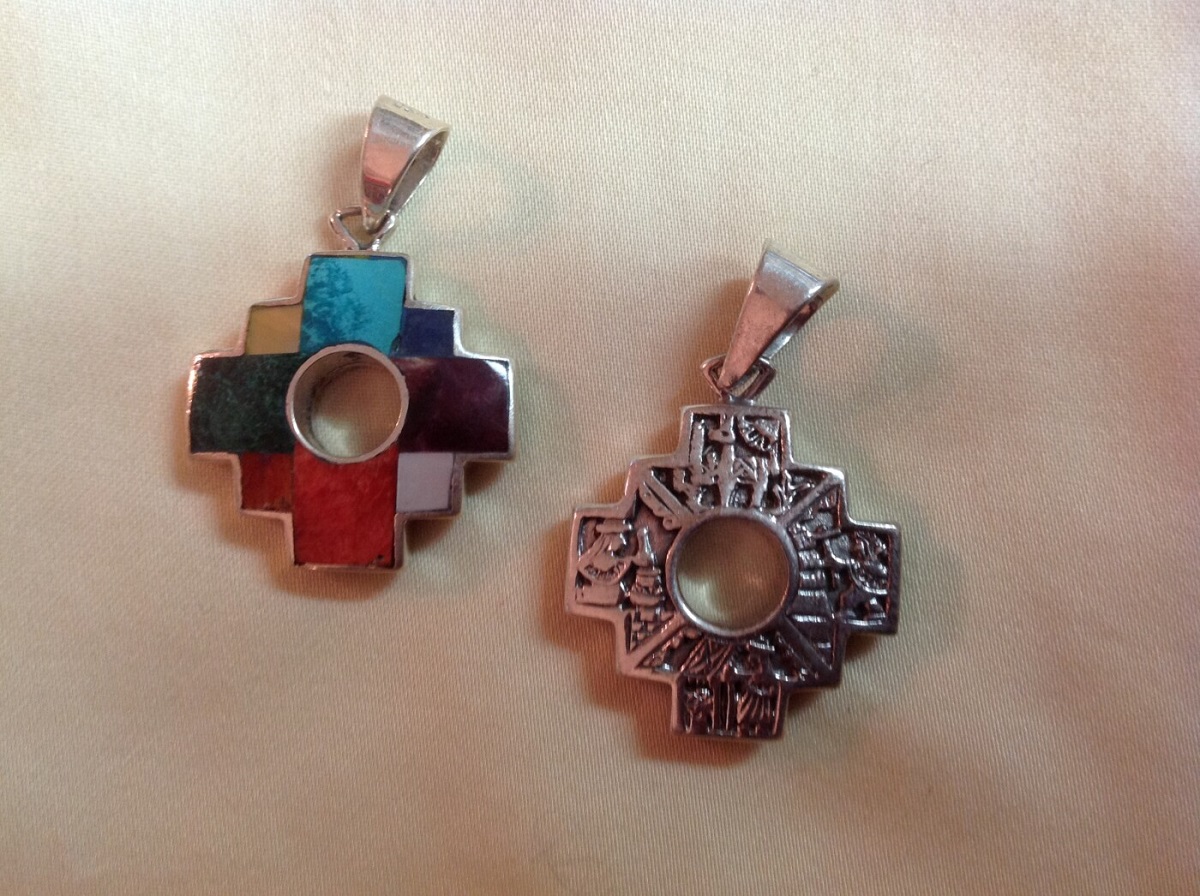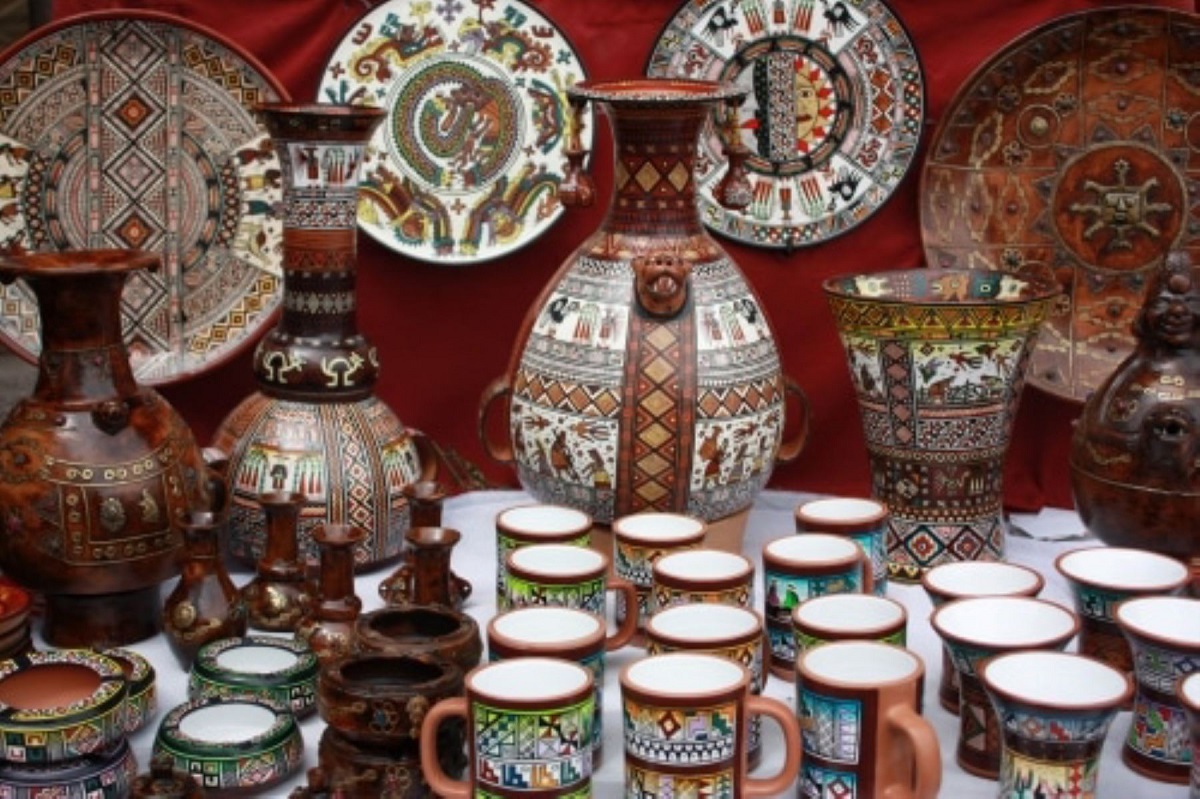
Handmade peruvian products reflect the diverse identities that evolved from the country´s complex cultural and historical formation. Pre-Inca cultures, such as the Chavín, Moche, Nazca, and Chimú, displayed a high quality of craftsmanship in their pottery, sculpture, and textiles. The Incas further developed these skills when they came to dominate the continent. Cultural stories were expressed through artistic means, in ceramic design and weaving, in the absence of the written word. Pre-Columbian traditions survived the conquest and have been appropiated by contemporary artists, thus preserving the indigenous culture. These handmade peruvian products add to the mystical nature of the area.
Handmade peruvian products
Textiles
Both practical and illustrative, textiles and clothes can communicate status as well as identity. Beautifully woven and using natural dyes, ponchos and belts can indicate a woman´s marital status or the standing of a man´s family within the community.
- Chimú textiles were adorned by geometric and zoomorphic designs similar to the wall relief found in Chan Chan Unju or tunic, worn by Inca men, was usually in bright colors and decorated with geometrical motifs.
- Alpaca and Andean llama wool is woven using traditional pre-Columbian looms, although European spinning wheels are now used commercially.

Jewelry
Indigenous peoples manipulated the abundant precious metals with great skill, and the Spanish brought with them new techniques.
- Threads, beads, sbells, bones, and seeds, were some of the natural materials used to make jewelry amongst pre-Columbian cultures.
- Silver filigree was introduced with the arrival of the Spanish and is still popular
- Metalworking to create jewelry and other artifacts, dates back in pre-Columbian Peru.

Ceramics
Peru has produced some of the finest pottery in the world. The excellent pre-Columbian Art Museum in Cusco shows how their aestheties still pleases the eye.
- Traditional Nazca pottery is polychromatic and characterized by birds and animals with mainly feline features.
- Moche ceramics are delicated painted with extraordinary detail. Some "portrait vessels" have different male faces which are amazingly realistic.
- Miniature clay churches, painted with corn and flowers, are a famous craft of Ayacucho
- Clay bulls, made in Pucara, are often flasks too and were used during ritual ceremonies conducted by priests.

Artifacts
Regionally distinctive artifacts, such as engraved gourds, gilt-edged mirrors, woven baskets, and hats can be found throughout the country.
- Engraved gourds, dating back over 4,000 years, have been found on the southern coast. They ere used in ritualistic ceremonies by the Incas.
- Peruvian dolls are bright, colorful, and mostly dressed in traditional clothes.
Woodwork
Carved wooden objects are ubiquitous, varying from drums to masks to magical sticks and the intricate tablas.
- Tablas, or colorful painted boards showing everyday life and rural activities, are mainly made in Ayacucho.
- Wooden masks, bot humorous and sinister, are painted in bright colors and used during festivals and carnivals.



